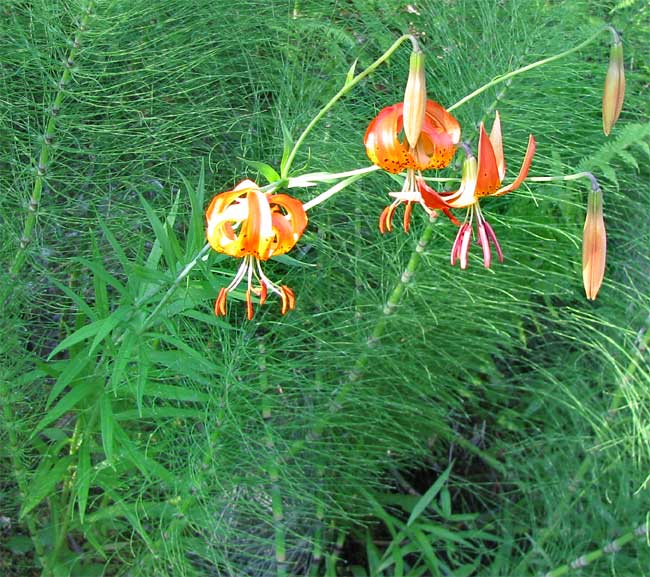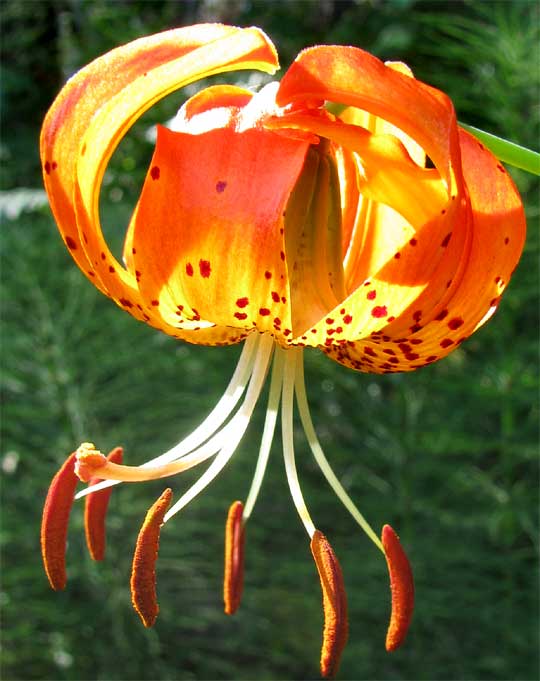Excerpts from Jim Conrad's
Naturalist Newsletter

from the the June 27, 2009 Newsletter, issued from the Siskiyou Mountains west of Grants Pass, Oregon:
LILY AMONG THE HORSETAILS
In a ditch running with cold water near here there's a patch of horsetails inside which some lilies grow. The other morning as I passed by, a ray of sunlight lit the plant's three open flowers like a spotlight, as seen above.
That's the Panther or Leopard Lily, LILIUM PARDALINUM, a very handsome, robust (to over seven feet tall) native wildflower. The interesting Field Horsetails forming a backdrop are Equisetum arvense -- much used herbally for kidney and bladder ailments. A close-up of the Panther Lily's three-inch-wide flower is shown below:

In that picture the six down-curving items with little frankfurters dangling at their ends are the male stamens, the stamens' white stems being filaments and the frankfurters being anthers. The mustard-like streaks on the frankfurters are slits opening where pollen is about to be released. Among the six stamens is one stemlike thing curved a bit more than the others and not bearing an anther. The three-lobed, orange tip of that thing is the pollen-receiving stigma, the pale stem below the stigma is the style, and the style leads to the top of the ovary hidden deep inside the corolla.
The Panther Lily in the ditch below us is so pretty and so easily seen from the road that I'm sure soon someone will dig it up, promptly killing it. The species is known to transplant poorly, but that seldom stops digger-uppers.
Horticulturalists have created domesticated forms of this species such as the Sunset Lily, which is a supposed eight-ft-tall hybrid between our Lilium pardalinum and L. humboldtii.